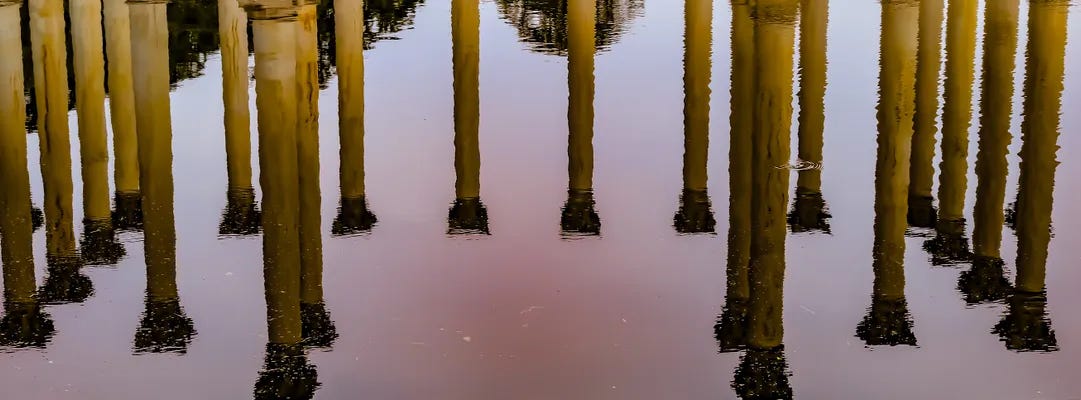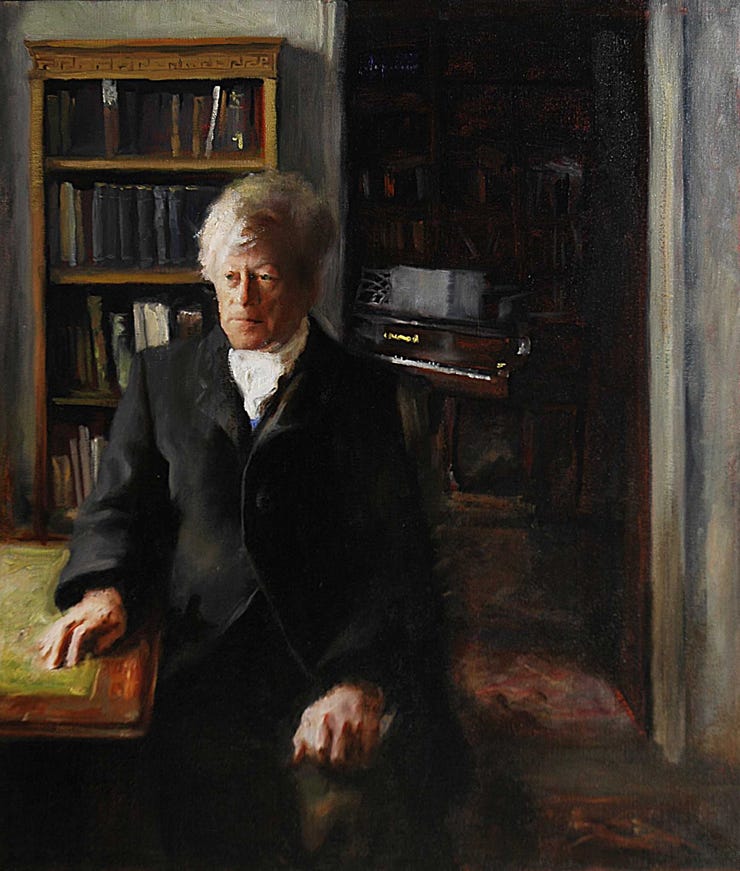The Architecture of Cultural Renewal
Institutions, patronage, and the battle for cultural excellence.

The current state of the arts did not happen by accident. Over decades, networks of funders, institutions, and professional gatekeepers embedded a narrow vision, shaping what is produced, promoted, and preserved. Rather than cultivating a rich artistic and intellectual heritage, they have imposed an orthodoxy that stifles excellence, tradition, and artistic freedom. Undoing this will require the same level of dedication. A true artistic renaissance—one that restores beauty, mastery, and cultural depth—must be built.
The legal world provides a model. In the 1980s, conservative and libertarian law students understood that winning cases alone would not shift the legal landscape. The institutions that shaped judicial philosophy, academic scholarship, and public debate remained in the hands of their opponents. Rather than merely critique the status quo, they built the Federalist Society, an organization that trained, placed, and connected legal professionals, creating a network that has successfully reshaped the American judiciary and reframed legal debate.
The arts need an institution with the same strategic clarity. Cultural renewal will not come from criticism alone; it requires building the alternative.
But institution-building does not begin in the abstract. It starts with understanding the systems already in place. Few have been more influential than public patronage.
Public Patronage
Public funding has long shaped the direction of the arts and humanities, determining both what is produced and what is elevated as culturally significant. The National Endowment for the Arts, National Endowment for the Humanities, Institute of Museum and Library Services, and Corporation for Public Broadcasting command over a billion dollars annually, deciding which ideas, institutions, and traditions flourish and which are left behind.
In the years ahead, these agencies can be redirected toward cultural excellence, promoting both artistic mastery and the serious study of history, literature, and philosophy. Leadership appointments at the Kennedy Center, National Gallery of Art, and Smithsonian Institution offer opportunities to reestablish standards at the national level. The revival of the Presidents’ Committee on the Arts and the Humanities could provide an official platform to advocate for cultural renewal, reinforcing excellence as a public priority across fine arts, film, and scholarship.
But public patronage alone cannot secure lasting change. Government funding is subject to political shifts, and institutions that depend on state resources remain vulnerable to ideological capture. This moment must be used to direct public resources effectively while also building a parallel structure that ensures continuity beyond election years.
That requires something government cannot provide: an independent movement of patrons, administrators, and artists who see themselves as the architects of cultural renewal.
A New Cultural Vanguard
Public patronage is a starting point, but private leadership will shape the future. A Federalist Society for the Arts should be the long-term goal, an institution capable of sustaining artistic excellence across generations.
Cultural power isn’t centered in Washington, D.C. It runs through museums, universities, symphonies, arts councils, and foundations—institutions that shape what is funded, exhibited, and performed at every level. If artistic renewal is to take hold, it must work through these institutions, shifting them from ideology back to excellence.
Yet for many artists and administrators, speaking honestly about their work—or rejecting outright the demands of political conformity—carries professional risk. Financial pressures and cultural gatekeeping keep even the most talented in line. A movement for artistic renewal must do more than offer an alternative. It must make stepping forward possible.
That starts with a visible, credible network that gives artists, curators, and institutional leaders the confidence to act. No one speaks out alone. They need to see that they are joining something with weight, something that will last. This isn’t about scattered acts of resistance but rebuilding institutions that set artistic excellence as the standard.
Patrons have a role beyond writing checks. They should be taking seats on museum boards and symphony foundations, making sure that artistic merit comes first. Administrators should enter leadership with a clear mission to raise standards. Artists need commissions, fellowships, and networks that recognize mastery and demand excellence.
Institutions are only as strong as the people who shape them. If a movement is serious, it doesn’t wait to be given influence. It takes it.
Rebuilding a National Artistic Movement
The Federalist Society reshaped the legal world by rooting itself in an intellectual tradition. The same is needed in the arts.
No thinker articulated this more clearly than Roger Scruton. He understood that art is not a tool for self-expression or political agitation but a response to beauty—one that deepens our sense of human dignity, strengthens our ties to a shared culture, and reveals meaning beyond the self. Beauty does not serve these ends. It makes them possible.
A movement without a firm intellectual foundation will not last. To succeed, it must be built on three non-negotiable principles:
Beauty is an intrinsic good. It exists beyond function or justification, drawing us toward something greater than ourselves. In the presence of beauty, we do not ask "what is it for?" but "what does it mean?" The greatest works of art do not simply entertain; they reveal.
Tradition is the foundation of artistic mastery. Every generation builds upon what came before, inheriting a language, a discipline, and a sense of form. To reject tradition is not liberation but amnesia. A culture that severs itself from its artistic past leaves its future without foundation.
Art should elevate rather than diminish. Stripped of its higher purpose, art is reduced to mere commodity and distraction. A civilization that no longer looks to its art to lift the soul is a civilization that no longer remembers what the soul needs.
Lacking these principles, the movement will either fade into irrelevance or be absorbed by the institutions it set out to challenge. Scruton understood that renewal isn’t possible without recognizing art’s higher purpose. His work provides the foundation for what comes next.
The Time to Build
The coming years offer a rare chance to reset the trajectory of American culture. Redirecting public patronage toward artistic excellence is part of the task, but lasting change depends on leadership—on placing institutions in the hands of those committed to beauty, tradition, and artistic achievement. Public funding alone cannot sustain the movement.
The real foundation must be laid in the private sphere. A Federalist Society for the Arts would unite patrons, administrators, and artists around a shared vision, ensuring that cultural renewal is not fragmented but sustained and strategic.
For decades, progressives have understood control over the arts belongs to those who fund, organize, and lead. They built the institutions that shape the cultural landscape. Now is the time to build the institutions that will restore it.
The work begins today.
This is the fourth and final installment in a series on how power, politics, and patronage shape American art. From the Cold War to the present, arts funding has dictated which styles thrive, which artists rise, and how institutions define cultural value.
Read Part three of the series, A Cultural Reset.






A grassroots revival is key — strong private networks are well suited to foster the talent, funding, and vision we need for lasting change. I like your “Federalist Society for the Arts” idea...let's get to work and make it happen
Perhaps a small contribution to the momentum of Roger Scruton's idea, mine, expressed in an Exhibition Proposal adhering to Beauty, re-viewed Traditions: ART CAN BE PHILOSOPHICAL and POETIC [https://robertstanleyart.com/ART%20CAN%20BE%20PHILOSOPHICAL%20and%20Poetic.pdf]